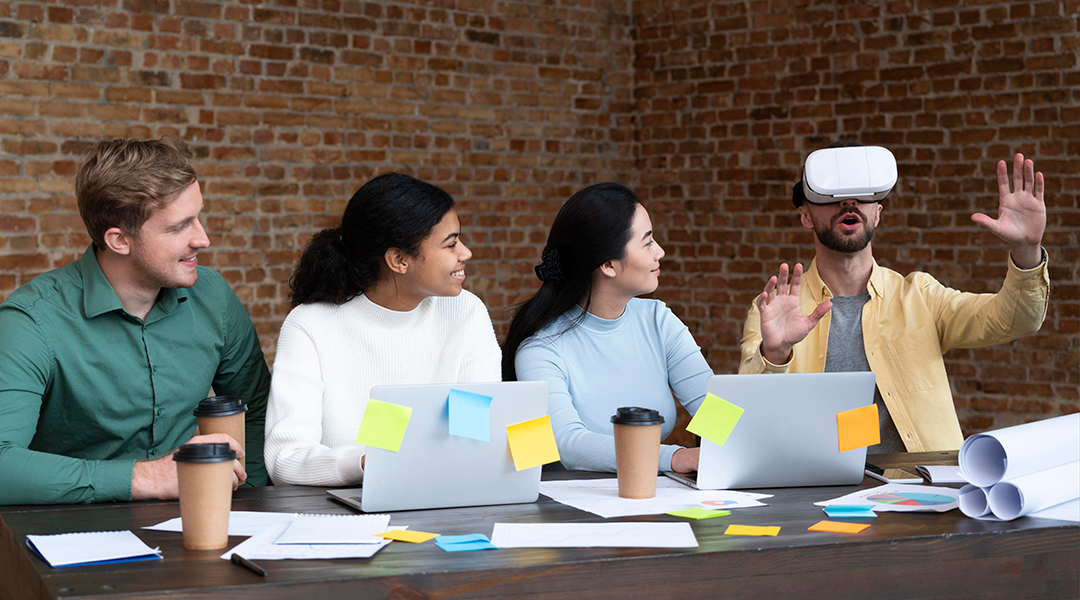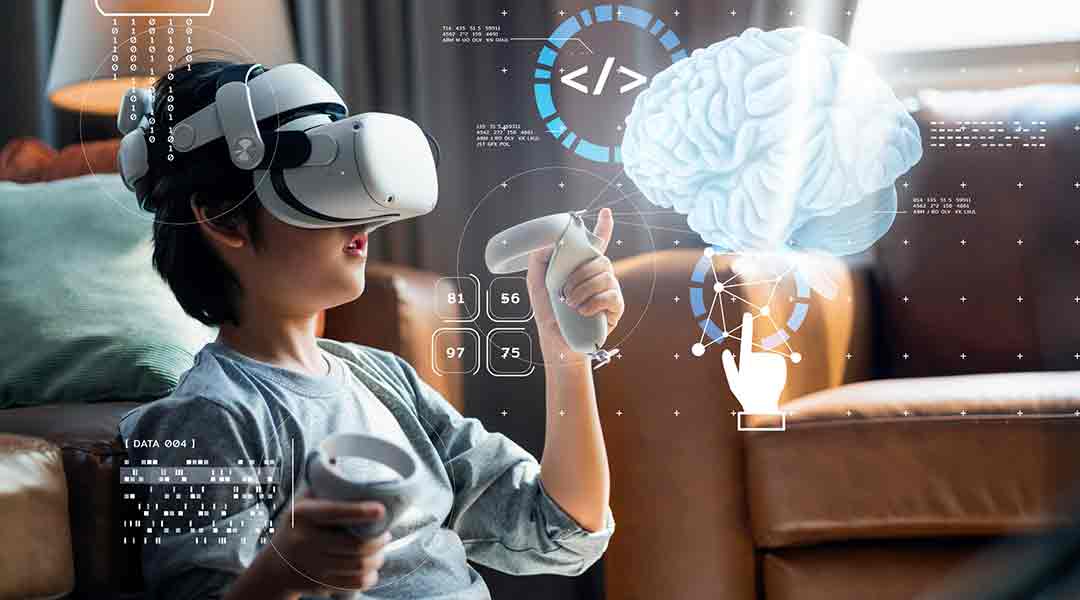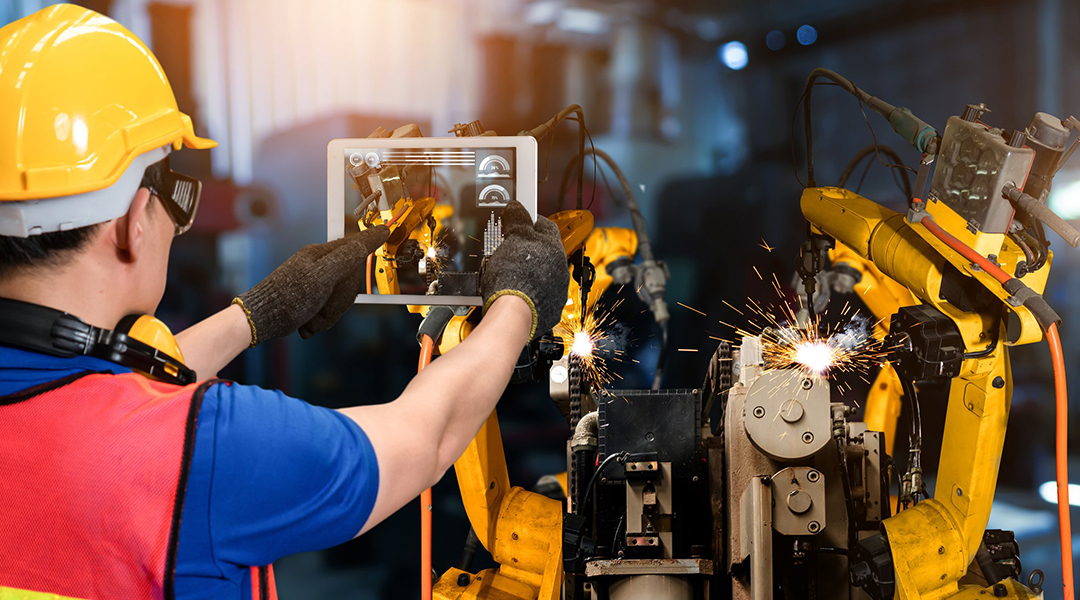The retail sector has emerged as a frontrunner in digital transformation investments in recent years. It is a domain that swiftly integrates technological innovations across various fronts, including logistics, storage, marketing, and customer service.
Augmented reality has been around for a while and is now transforming the retail industry's client perspective and shopping experience. AR technology is rapidly shifting towards providing real value to customers rather than being used only for PR campaigns.
AR has evolved into a powerful technology with significant real-world applications, particularly in the retail industry. It allows retailers to create immersive, interactive experiences that engage customers in new and exciting ways. Customers can virtually "try on" products, visualize how items would look in their homes, and get a better sense of scale and fit before purchasing. This can lead to higher customer satisfaction, fewer returns, and increased sales. Read on to learn more about how AR transforms the retail market!
What Is Augmented Reality?
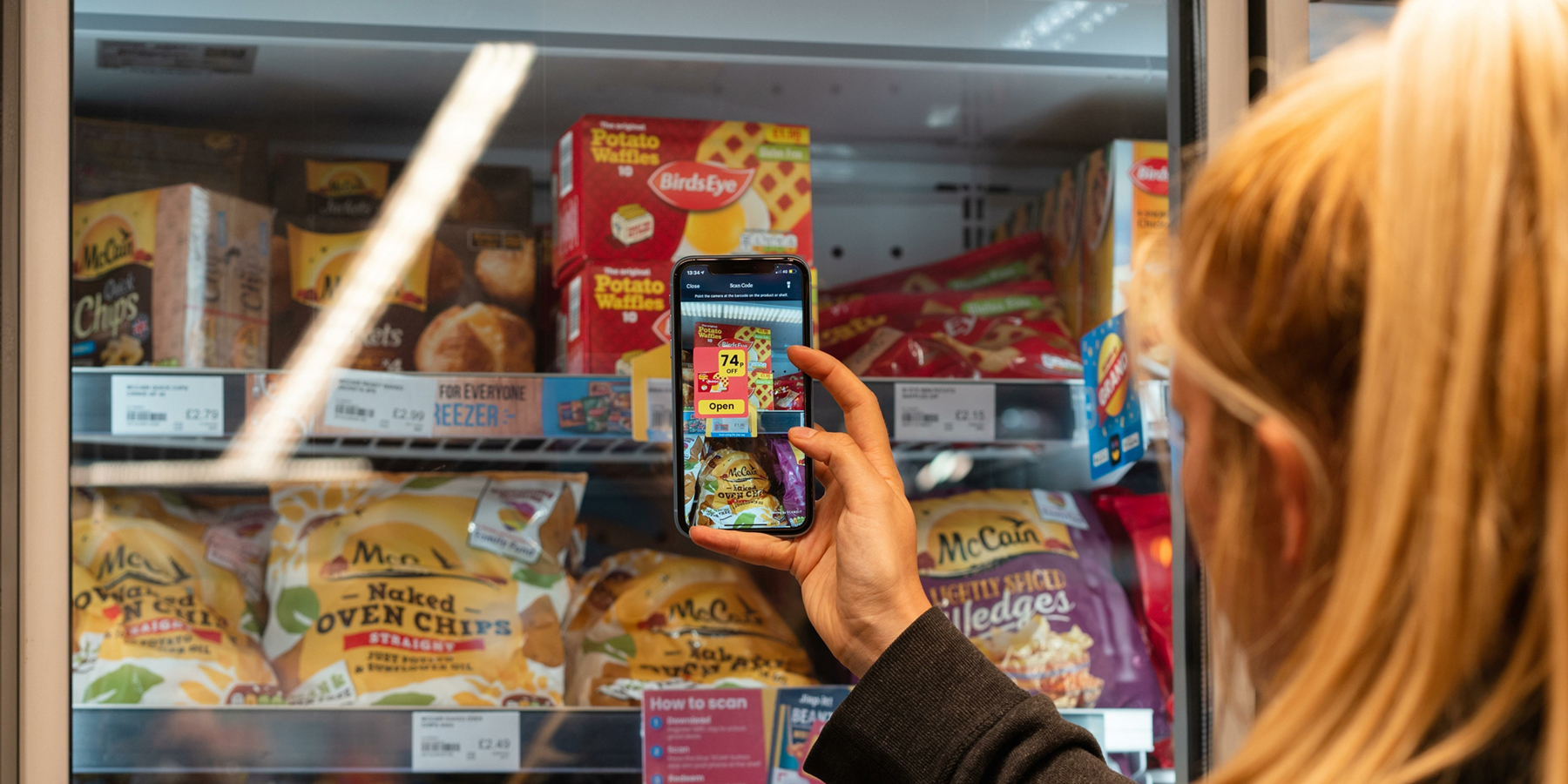
Augmented reality is a technology that enhances the real world by adding real-time digital content to physical objects. When a user points their camera-equipped device at an object, the built-in AR software uses a combination of depth tracking and computer vision to analyze the video stream, recognize the object, and overlay digital content on top of it.
As users shift their camera, the size and orientation of the AR display move automatically with it, creating an exciting and immersive digital experience. This technology has been around for years, with examples like Snapchat's dog filter. Still, it has recently become a powerful tool for brick-and-mortar businesses and direct-to-consumer brands.
By bridging the physical and digital worlds, retailers are thoughtfully elevating customer experiences and unlocking new ways for consumers to interact with products. Such integration allows customers to visualize products in their environments, reducing uncertainty and increasing the likelihood of a purchase.
Moreover, AR in retail can provide valuable insights and data to retailers, helping them better understand customer behavior and preferences. The information can then be used to optimize product offerings, marketing strategies, and overall business operations.
As consumer expectations continue to evolve, the adoption of augmented reality in the retail industry grows. Businesses that embrace this technology will be well-positioned to deliver engaging, personalized experiences that drive customer satisfaction and sales.
Why Is AR In Retail and eCommerce?
Besides using augmented reality in advertising, we can see how it transforms other industries. One of the examples is eCommerce, where augmented reality empowers customers to preview products or experience services in their environment and on their own time before purchasing. By leveraging the power of AR, online retailers can help customers make more informed decisions and reduce the likelihood of returns. Let’s see why AR in retail and eCommerce is so popular.
One of the critical benefits of AR in retail and eCommerce is the ability to offer virtual try-on experiences. Such experience addresses the common challenge of "it looked great on the mannequin" - where an item may not suit the customer as expected. AR-powered virtual try-on solutions for clothing, makeup, accessories, and even eyeglasses allow customers to visualize how products will look on them, increasing their confidence in purchasing.
Another powerful application of AR in retail and eCommerce is the ability to preview how a product will look in the customer's environment. It can be particularly useful for furniture, electronics, and other large items, where it can be challenging to gauge the accurate scale and fit based on online images alone. AR preview placement tools allow customers to see true-to-scale 3D models of products in their own living spaces.
AR in retail can also be leveraged to create interactive user manuals for products with a learning curve. These manuals respond to user actions, providing on-page contextual support and guidance on using the product effectively. By scanning the physical product, the AR manual can highlight buttons, provide step-by-step instructions, and offer visual cues to help new customers get up to speed.
Augmented reality has also found a home in social media with the rise of AR filters on platforms like Instagram and Snapchat. These filters allow customers to try new products, showcasing how they will look virtually. It engages the audience and encourages user-generated content and brand awareness.
Using augmented reality, eCommerce businesses can enhance the customer experience, increase conversion rates, and reduce the likelihood of returns. As the technology continues to evolve, integrating AR into online shopping will become increasingly essential for retailers looking to stay ahead of the competition and meet their customers' evolving expectations.
Benefits of Augmented Reality in Retail
Augmented reality is revolutionizing the retail industry. It offers a range of benefits that transform the customer experience and drive business success. Here, we have collected some of the most essential benefits of augmented reality for retail businesses.
-
Customer engagement and experiential retail. As retailers emphasize in-person experiences, many brands are leveraging augmented reality to create immersive shopping experiences that drive engagement, increase customer education, and spark curiosity among shoppers. For example, Starbucks brought customers on a virtual journey of a coffee bean, allowing them to witness the transformation from roasting to the final product.
-
Sales and conversion lifts. Augmented reality can significantly impact in-store and online conversion rates, making a meaningful difference in a retailer's bottom line. According to Shopify's internal data, merchants who add 3D content to their stores see an average conversion lift of 94%.
-
Contactless experiences. As eCommerce evolves and consumers become more comfortable shopping online, augmented reality can replace the need for physical interaction with products. Users can virtually evaluate photo-realistic representations and view products from different angles, saving time and effort while reducing the need for in-person contact.
-
Shareable and trackable content. AR-powered filters, displays, and applications are powerful organic marketing tools that engage customers. Ulta Beauty's shoppable AR filters on Snapchat, for example, allow users to try makeup virtually and share the results with friends while providing valuable data and insights to the brand.
-
Virtual shopping and navigation. Augmented reality enables consumers to overlay digital clothing, images, and accessories directly onto their bodies in real time, enabling virtual try-on experiences. AR navigation systems can also guide shoppers through brick-and-mortar augmented retail environments, providing additional information about physical products.
-
In-store displays and virtual fitting rooms. Augmented reality windows and digital in-store displays can engage prospective shoppers, drive brand awareness, and provide valuable analytics. Virtual fitting rooms allow customers to try on items without physically touching them, increasing conversion and reducing returns.
As technology advances, augmented reality becomes a retail essential, transitioning from a "nice-to-have" to a critical component of successful customer experiences and business strategies. By leveraging AR's transformative power, retailers can enhance engagement, boost sales, and stay ahead of the competition.
Examples of Augmented Reality in Retail
In today's retail landscape, augmented reality has emerged as a game-changing technology that breaks the boundaries of traditional shopping experiences. Innovative and transformative AR solutions have led to more and more retailers embracing this powerful technology. Let’s see some of the most exciting examples.
IKEA Kreativ
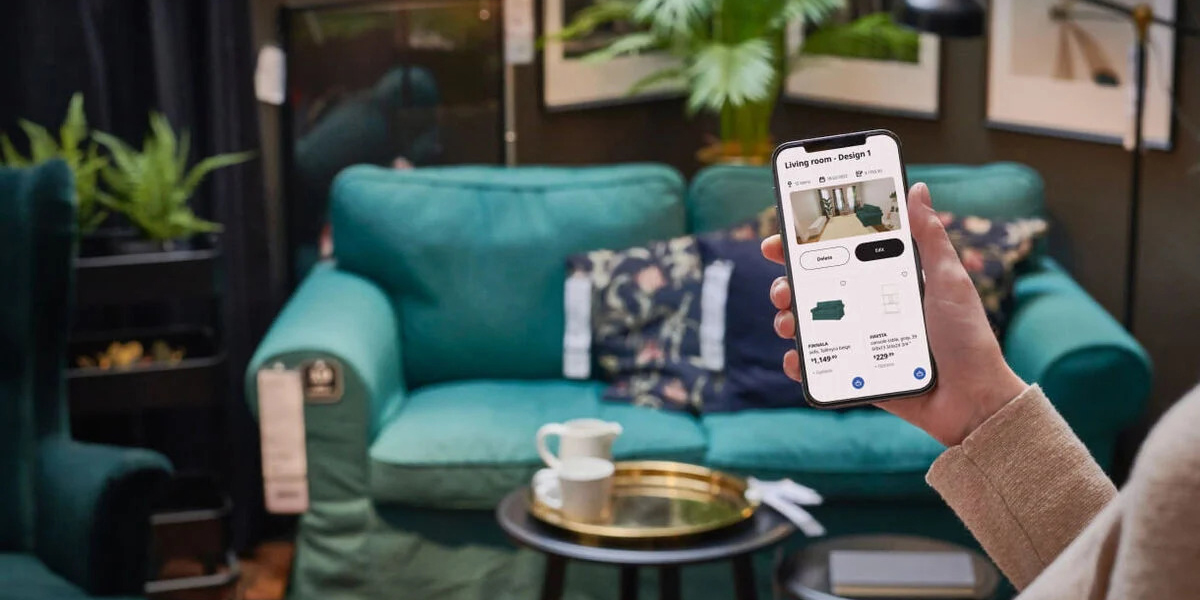
IKEA, the renowned furniture retailer, has taken a significant step forward in enhancing the customer experience with the introduction of IKEA Kreativ. This innovative solution leverages advanced augmented reality technology to make furniture shopping effortless.
Seamless room scanning
At the heart of IKEA Kreativ is the ability to create a complete 3D replica of a customer's room. By utilizing the LiDAR technology integrated into iPhones, customers can quickly scan their living spaces with just a few taps. This precise scanning eliminates manual measurements, providing a detailed digital representation of the room.
Visualizing new furniture
Once the room scan is complete, customers can explore IKEA's extensive furniture collection and virtually place new items in their space. This feature offers a true-to-life visual representation of how the furniture will look and fit within the customer's existing decor, taking the guesswork out of the shopping experience.
Hassle-free redesign
IKEA Kreativ empowers customers to redesign their living spaces effortlessly. By removing their furniture and experimenting with new products, customers can visualize the transformation without needing physical measurements or trial-and-error. Its convenience and precision streamline the furniture shopping process, making it easier than ever for customers to find the perfect pieces for their homes.
IKEA Kreativ provides customers with a seamless, hassle-free way to visualize and plan their dream living spaces, ultimately enhancing their overall satisfaction and confidence in their purchases. As the retail landscape continues to evolve, innovative solutions like IKEA Kreativ demonstrate the transformative potential of AR in creating exceptional customer experiences.
Toyota's Car Customization
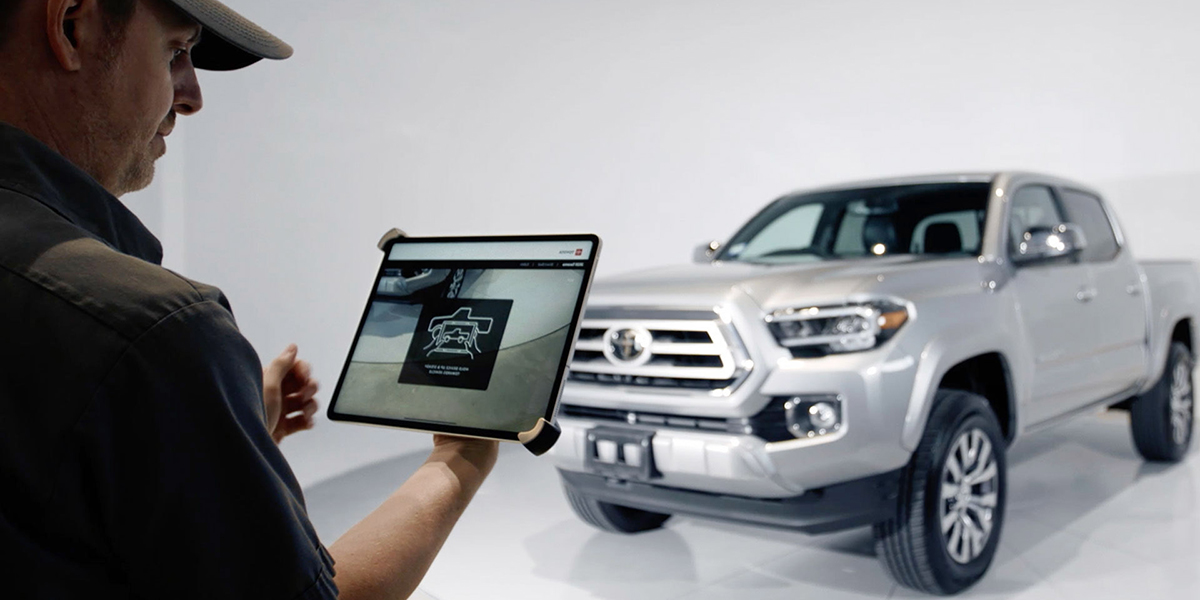
Historically, the car accessory shopping experience has been fraught with challenges for customers and dealerships. Shoppers have frequently voiced dissatisfaction with the scarcity of point-of-purchase materials and limited accessory choices. Dealerships, however, have often lacked effective visual aids and up-to-date information to showcase their available accessories.
To address these pain points, Toyota has embraced the power of augmented reality to revolutionize the car customization experience.
Seamless accessory visualization
Toyota's AR application leverages advanced technologies, including machine learning and Apple's ARKit, to provide customers with a seamless and intuitive accessory shopping experience. The app allows users to recognize their vehicle through the camera system effortlessly and then virtually add computer-generated accessories without needing markers or physical images on the car.
Immersive and user-friendly
This AR-powered solution offers a more immersive and user-friendly approach to car accessory shopping. Customers can now visualize how different vehicle accessories would look, empowering them to make more informed purchasing decisions. Eliminating reliance on physical brochures or outdated website images enhances the overall experience, making it easier for customers to explore and customize their cars.
Using augmented reality, Toyota has bridged the gap between the physical and digital realms of car accessory shopping. Customers can now enjoy a more interactive and engaging experience, while dealerships can provide a more comprehensive and up-to-date showcase of their available accessories.
Amazon's Virtual Try-On
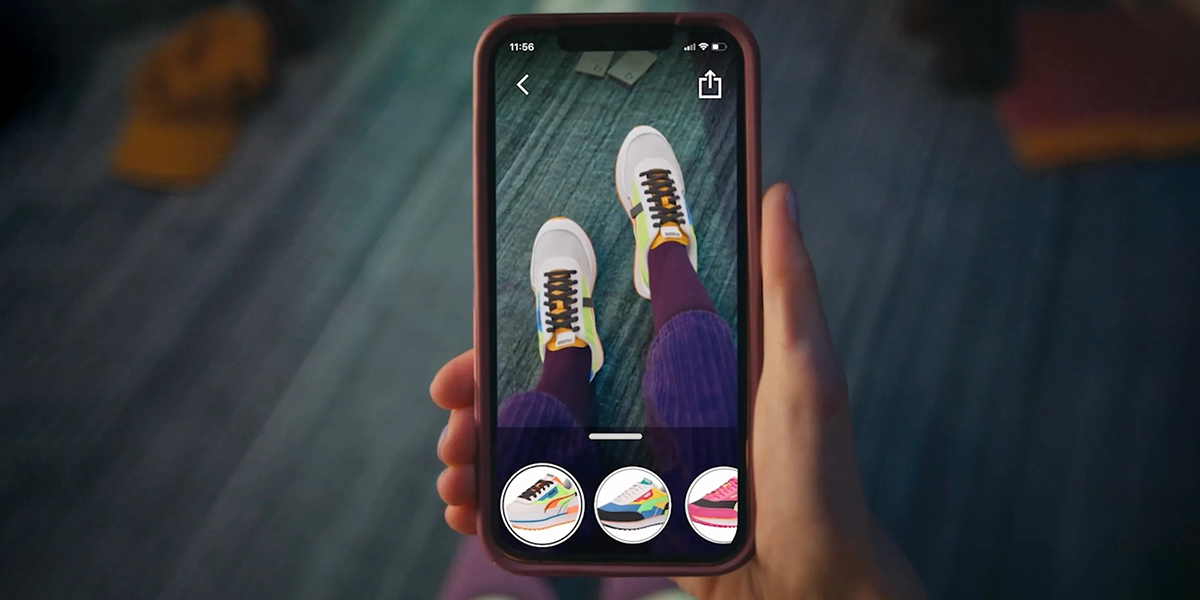
In the ever-evolving world of online retail, Amazon has embraced the power of augmented reality to enhance its customers' shopping experience. The retail giant recently unveiled a groundbreaking feature called "Virtual Try-On for Shoes," which enables customers to visualize how a pair of shoes will look on their feet before making a purchase.
Seamless visualization
The Virtual Try-On for Shoes feature allows customers to point their mobile phone's camera at their feet, and the AR-powered shoes will instantly appear on the screen. This seamless integration of digital and physical elements gives customers a true-to-life representation of how the shoes will look, eliminating the guesswork often associated with online shoe shopping.
Personalized exploration
Beyond just visualizing the shoes, the feature also empowers customers to swap out different color variations of the same style quickly. This personalized exploration allows shoppers to find the perfect pair that complements their style and preferences, all from the comfort of their homes.
Shareable experiences
The Virtual Try-On for Shoes feature lets customers capture and save photos of their virtual try-on sessions. Customers can then share these images on social media, further enhancing the shopping experience and potentially driving engagement and brand awareness.
Amazon has set a new standard for online shoe shopping. The Virtual Try-On for Shoes feature provides a more immersive and personalized experience and helps reduce the likelihood of returns, ultimately benefiting both customers and the retailer.
Vanity Planet's Skin Reporter

In the ever-evolving world of beauty and skincare, Vanity Planet has introduced an innovative tool called Skin Reporter, which aims to revolutionize the way customers approach their personal skin health.
Rapid skin analysis
Skin Reporter utilizes advanced scanning technology to analyze a person's skin in 30 seconds. By evaluating key factors such as oil, wrinkles, dryness, and texture, the tool generates an overall skin score and age, providing customers with a comprehensive understanding of their skin's condition.
Personalized recommendations
Skin Reporter generates personalized product recommendations tailored to the user's needs based on detailed skin analysis. This way customers can easily find the perfect skincare solutions to address their concerns, whether targeting wrinkles, managing oil production, or hydrating dry skin.
Empowering customers
By offering this advanced skin analysis and personalized recommendation feature, Vanity Planet empowers customers to take a more proactive and informed approach to their skincare routine. The tool's ability to provide a clear, data-driven assessment of one's skin condition allows users to make more informed purchasing decisions, ultimately leading to more effective and satisfying results.
Bridging the gap
Skin Reporter bridges the gap between advanced skincare technology and individual users' needs. The tool delivers a personalized experience that helps customers navigate the often overwhelming world of skincare products and find the solutions that genuinely work for them.
Boost sales & engage customers with our AR retail solutions!
Challenges and Future Perspectives of AR in Retail
Augmented Reality has shown significant potential for increasing sales and enhancing the customer experience in the retail industry. However, you may consider several challenges and future perspectives to ensure the successful integration of AR technology.
- Technological advancements and changing consumer demands One of the primary challenges for implementing AR in retail is the need for continuous technological advancements to keep up with changing consumer demands. As customers become more tech-savvy, the quality and realism of AR experiences need to improve to maintain their interest. It necessitates regular AR software and hardware updates, which can be time-consuming and expensive for retailers.
- Integrating AR across sales channels Another challenge is effectively integrating AR with distribution channels. Developing and maintaining an intuitive AR experience across different platforms can be a complex task as retailers strive to optimize their systems for seamless interaction between offline and online shopping. Ensuring a consistent brand experience across all channels is essential to keeping customers engaged and building trust in the AR-enhanced shopping process.
- Targeting premium product customers AR technology has shown particular promise in promoting premium products, where customers are more inclined to seek immersive and customizable experiences. To maximize this potential, retailers must develop targeted strategies that cater to high-value customers, including tailored AR experiences and personalized recommendations. Reaching this market segment may require significant investments in data analytics and digital marketing resources.
- Future advancements and opportunities The future of AR in retail will likely be shaped by ongoing technological developments and retailers' adaptation to changing consumer preferences. Advances in AR glasses, for example, could encourage more widespread adoption of the technology by eliminating the need for handheld devices.
Incorporating machine learning algorithms to enhance AR experiences may allow retailers to offer real-time, personalized shopping recommendations, improving the overall customer experience.
To navigate the challenges and capitalize on AR's future in retail, retailers must be willing to invest in the necessary technological infrastructure, sales channel integration, and targeted strategies. By embracing AR's potential and exploring the opportunities presented by future advancements, retailers can significantly impact sales and set the stage for more immersive and personalized shopping experiences.
Immersive Augmented Reality by Program-Ace
While the benefits of augmented reality in retail may not seem obvious, the market is still building momentum. For a retail business owner interested in leveraging the latest augmented reality apps, custom 3D catalogs, virtual fitting rooms, and other interactive technology, choosing a reliable expert with a strong portfolio in this field may be difficult.
Program-Ace is considered to be a leading augmented reality development company. It uses various technologies and platforms, such as ARKit, ARCore, Unity, iOS, Android, and others, to deliver an unrivaled experience to clients.
We provide turnkey solutions and software development services in retail to make your digital transformation smooth, practical, and advanced. We focus on cross-channel eCommerce, gamification, VR and AR commerce, interactive merchandising, augmented reality product configurators, and other solutions for your business.
We may be the perfect fit if you are looking for full-cycle development services and an individual solutions provider for retail.
